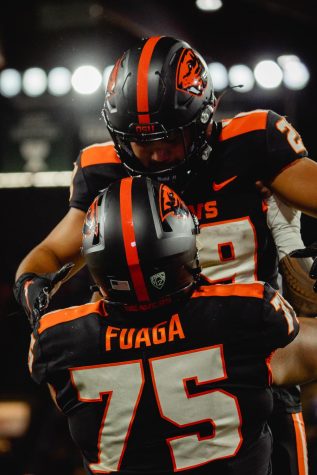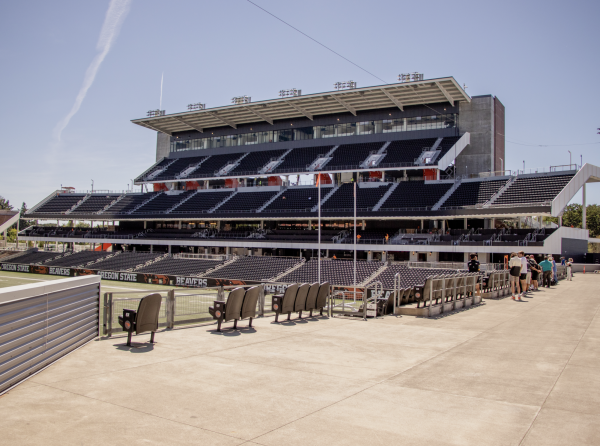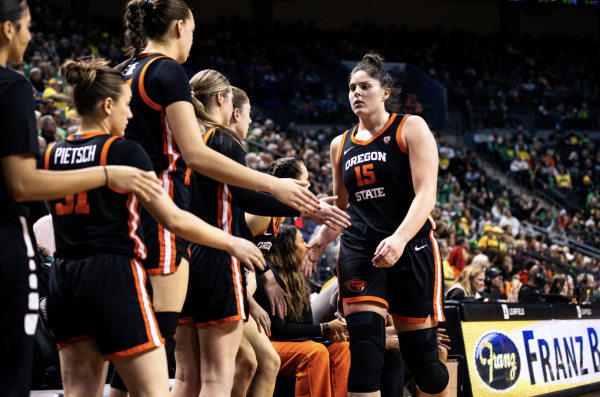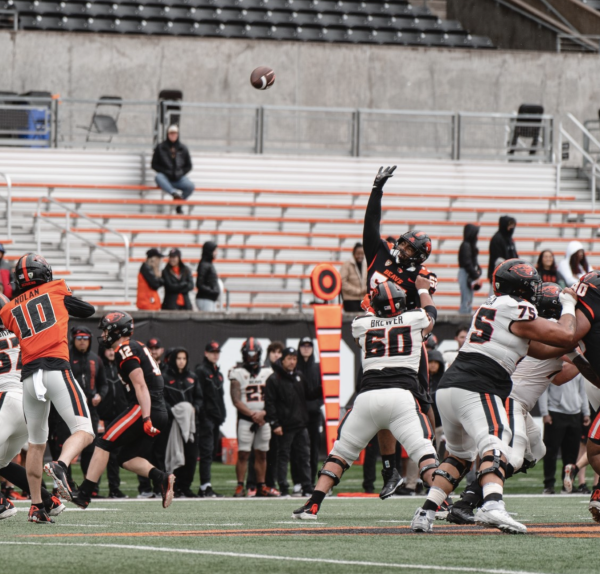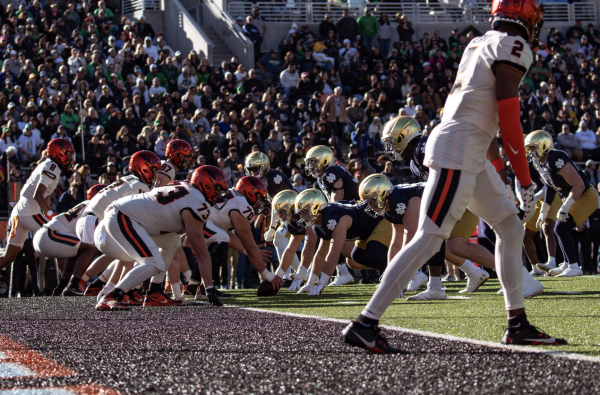Rathbone: Does lack of Oregonians hurt the Civil War?
November 25, 2015
The rivalry would only enhance with more in-state players on teams
“You think darkness is your ally? You merely adopted the dark. I was born in it, molded by it. I didn’t see the light until I was already a man — by then it was nothing to me but blinding!”
I didn’t realize it the first time I watch The Dark Knight Rises, but Bane wasn’t actually talking about how Batman’s strengths were actually his strengths. He was talking about what makes up a great college football rivalry — that deep-seeded hate between two college programs.
In the press conference following Oregon State’s 52-7 loss, the questions naturally shifted to Friday’s Civil War — a rivalry game that divides the state, friends and even families when the Ducks and Beavers square off on Thanksgiving weekend.
Head coach Gary Andersen chimed in about the game and will be getting his first taste of the seventh most played rivalry game in college football history.
“They’ve got an opportunity to play in a rivalry game that’s right up there as one of the best in the country, if not the best in the country,” he said.
Easy there, coach. Best in the country? Come on Gary, you coached in the Big Ten for two seasons prior to arriving in Corvallis, how could you forget about Michigan and Ohio State rivalry? Or any other of the historic and heated rivalries in the Big Ten?
While the Civil War is one of the oldest rivalries in college football, it’s severely lacking in terms of how heated it is between the players on the field.
At the risk of sounding like a bitter Oregon State fan who has been numbed by the seven straight losses to Oregon, I am going to make the claim that the Civil War suffers due to lack of homegrown players on both the Oregon and Oregon State rosters.
There is a total of 49 players that are from the state of Oregon on both the Oregon and Oregon State roster, the rest are made up of out of state players who have merely adopted the rivalry.
What separates the Ohio State, Michigan rivalry and the other big-time rivalries from the Civil War is the number of players that are from the school’s state. Ohio State has 74 players from Ohio, and 50 Michigan players are from Michigan. You don’t think that they are aware of the rivalry? You think they have extra motivation going into those games? Maybe I’m the only one who thinks that.
Take the 2012 Civil War for example. Cornerback Jordan Poyer, who grew up in Oregon, wrapped up Oregon running back De’anthony Thomas, Poyer then finished the tackle by slamming Thomas to the ground a split second after the whistle. The fallout of the play resulted in a scuffle with Thomas kicking Poyer, which turned into a much bigger deal than it needed to be.
You would not see a reaction like that in an Auburn/Alabama game or an Miami/Florida State game. You know why? That tackle by Poyer had some piss and vinegar to it – that’s how every tackle should be in rivalry games.
I understand that the state of Oregon is not exactly a recruiting hotbed and there are richer pastures in other states that can bring better players to the programs. But how much better would this rivalry be if Ndamukong Suh and the Owa Odighizuwa great high school players from Oregon who are now in the NFL, had stayed to play college ball in their home state rather than playing ball out of state? That would only enhance the profile of the rivalry.
Following the Washington game, senior running back Storm Barrs-Woods said that the Beavers hate the Ducks, and the Ducks hate the Beavers. I wonder if he knew that before he arrived in Corvallis.
On Twitter @brathbone3














































































































